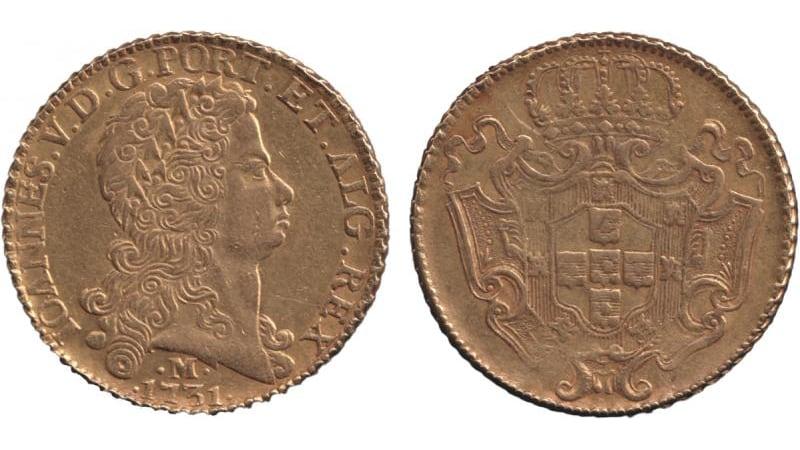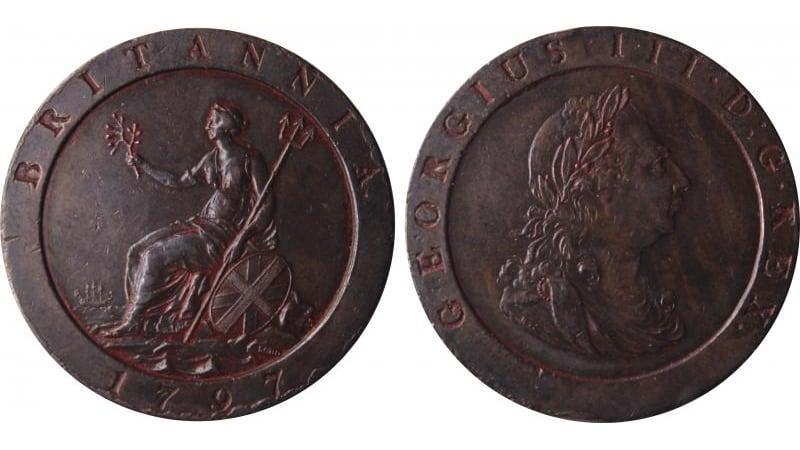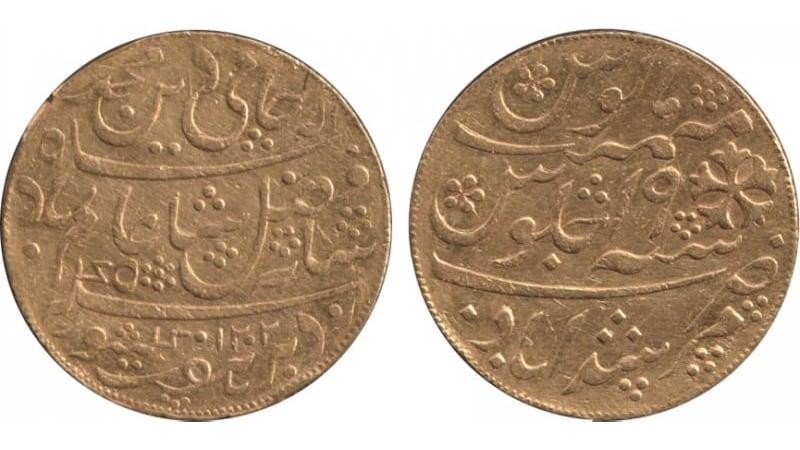Submitted by aarAdmin on Sat, 03/29/2025 - 00:00
A rare complete set of proclamation coins – inextricably linked to the development of Australia’s domestic currency system – sold for around their catalogue estimates at Melbourne-based Abacus Auctions four-day sale of stamps, coins, banknotes, postal history and sporting memorabilia beginning on March 25.
The most valuable was a gold Portuguese Johanna from Brazil (lot 3045), knocked down for $5750, which in early Australian colonial days was valued at four pounds.
A half Johanna (lot 3046) sold for $1800, while a 1797 British George III ‘Cartwheel Penny’ (lot 3047) was a $460 return.
Other strong returns were achieved by a 1793 George III gold Great Britain Spade Guinea (lot 3049), a $1600 exchange, and a 1793 gold Indian Mohur used by the East India Company (lot 3052) that sold for its $1600 estimate.
Proclamation coins were introduced after the New South Wales penal colony, established in 1788, ran into money problems as currency was drained from the fledgling establishment and people began to starve.
The Napoleonic Wars had thrown Europe into turmoil and a faraway convict dumping ground was not high on Britain’s priority list.
To overcome their pressing issues, in 1800 the New South Wales governor, Captain Philip Gidley King, issued a currency proclamation to combat what had until then been the use of rum and a mixed bag of foreign coins to supplement a default barter system.
The foreign coins were from a variety of countries including Spain, Portugal, The Netherlands, India and Britain.
A few months before, the colony had received a shipment of four tonnes of Britain’s 1797 copper Cartwheel Penny and the proclamation ascribed a definitive denomination to 11 different overseas currencies based on its value.
Among the sporting memorabilia section of the auction was the best collection of cricket and Australian Rules football cards ever handled by Abacus, according to its resident expert Max Williamson.
Of particular note were 1887-89 Goodwin & Co (Old Judge Cigarettes) ‘Celebrities’ cards (lots 3603 and 3604) featuring Peter burns from the South Melbourne Football Club and Bill Hannysee, Port Melbourne Football Club captain, which sold respectively for $2200 and $1500.
Another was the 1925 JJ Schuh (Magpie Cigarettes) almost complete set (Lot 3636), knocked down for $1900, the 1922 Thorp’s Chocolate Fudge ‘League and Associated Captains’ (lot 3633), for $1500, the 1907 Sniders & Abrahams ‘West Australian Footballers’ (lot 3613), for $1600, and the company’s rarest of all its sets, the 1910-11 ‘Victorian League Footballers’ (lot 3621) for $1450.
Many of the stamps on offer proved popular with buyers including a First Watermark 4d orange kangaroo (lot 115) which sold for $5750 on its $4000 catalogue estimate and a solid collection of First Watermark 5/- and other denominations (lot 61) that changed hands for $4000 - $1000 above the listed estimate.










